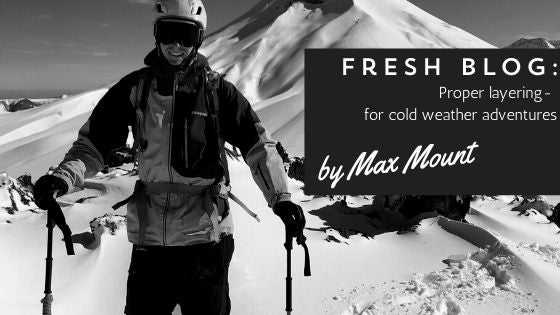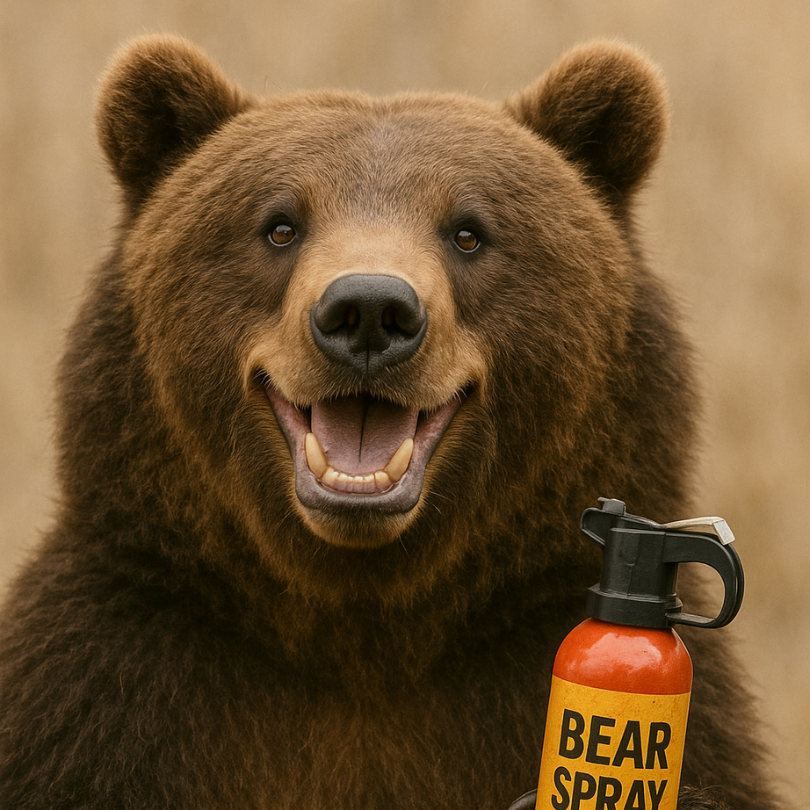Your Cart is Empty
Mon - Sat 10AM to 6 PM - Sunday 12PM-5PM

Proper Layering
When it comes to cold weather adventure from snowshoeing behind the house to multi-day epics in Alaska’s mountain ranges, proper layering is the key to having fun and staying safe in the wintery outdoors. This is a quick and easy guide to get you out in the cold dressed like a pro.
Base Layers
The first layer to think about when getting ready for a cold-weather adventure is the layer of clothing against your skin. The first rule of base layers is to AVOID ALL COTTON. Cotton has no moisture-wicking properties so as you sweat, a cotton t-shirt or underwear holds that moisture against your skin and makes you cold. The best base layers are synthetic or wool. A synthetic or wool base layer pushes the moisture away from your skin allowing you to stay dry and warm. This is the same for your legs. Using synthetic or wool tights is the best way to stay warm.

Mid Layers.
Mid-layers are fully dependent on the weather conditions and where the true warmth comes from. On an average weather day, a light puff is the perfect mid-layer. This will help retain your body heat and keep you warm. For colder weather days a larger puffy will retain more heat. Generally, for legs, a mid-layer is not necessary unless in truly frigid temperatures. As most of your body heat is emitted from your core, keeping your core warm is the most important part.

Outer layer
The outermost layer is less for retaining heat and more for keeping the elements out. This is where materials like Gore-Tex come into play. A water/ windproof layer is a key element to proper layering, Keeping you dry and warm regardless of what the weather does. The other key to outer layers is when traveling uphill remember to remove the layer so it does not trap moisture on the inside of the jacket. But when you stop uphill travel the first thing you should do is put your outer layer to keep the heat you just generated from dissipating.

Accessories
Accessories such as hats, gloves, and socks are just as important as a good jacket. Starting at the top and going down a good warm hat is a great way to help stay warm. Hats are very straightforward and a fancy merino wool hat is not necessary. Just something to keep the head warm is the goal. Gloves are another very important part of a good cold weather kit. Having a nice pair of waterproof gloves will allow your hands to happily function in colder weather. There are no major performance differences between gloves and mittens except mittens tend to be slightly warmer. When it comes to socks having a nice high-end pair of wool or synthetic socks makes a huge difference in how warm your feet stay. Changing socks often is key. Damp socks lead to cold feet. Having warm comfortable feet is a make or break on a cold-weather adventure.


If you are camping in bear country, or in any place where food storage is a concern, you should strongly consider using a bear canister–a storage system that is built to keep bears out of your food. And in some places, particularly parks in California, Montana, Colorado, and Washington,backcountry campers are required to have and use bear canisters.
While you may get lucky by hanging your food in a sack from a tree, this is not permitted in many areas and virtually impractical in many alpine anddesert backpacking zones. Bear canisters are the preferred method for storing food and other smelly items, but there are many kinds to be aware of. Let’s look at them in more detail.

For many hikers, summiting one of Colorado’s 14,000-foot peaks is a lifetime achievement. Others make it their entire personality, working for years and even decades to climb all of them. Some make a goal of climbing them all in a single season while others try to ski them all.
The problem with climbing 14ers for many people is that they are difficult–and we’re not just talking about the thin air. Of the 58 in Colorado, about one-third entrail considerable exposure and require skilled route-finding and ascent/descent skills. About half have either moderate or considerable challenges. Just eight are considered “easy.”
Hikers looking to summit a 14er near Durango will find four that rank generally as easy or the easy end of moderate. They are all in the same two canyons and can be climbed by someone with decent fitness, good shoes, and a penchant for waking up early. The roads to access all these peaks are part of the Alpine Loop and can be driven from Silverton in a four-wheel drive such as a Tacoma, but are generally not in all-wheel drives like Subarus.
Ready? Here goes!